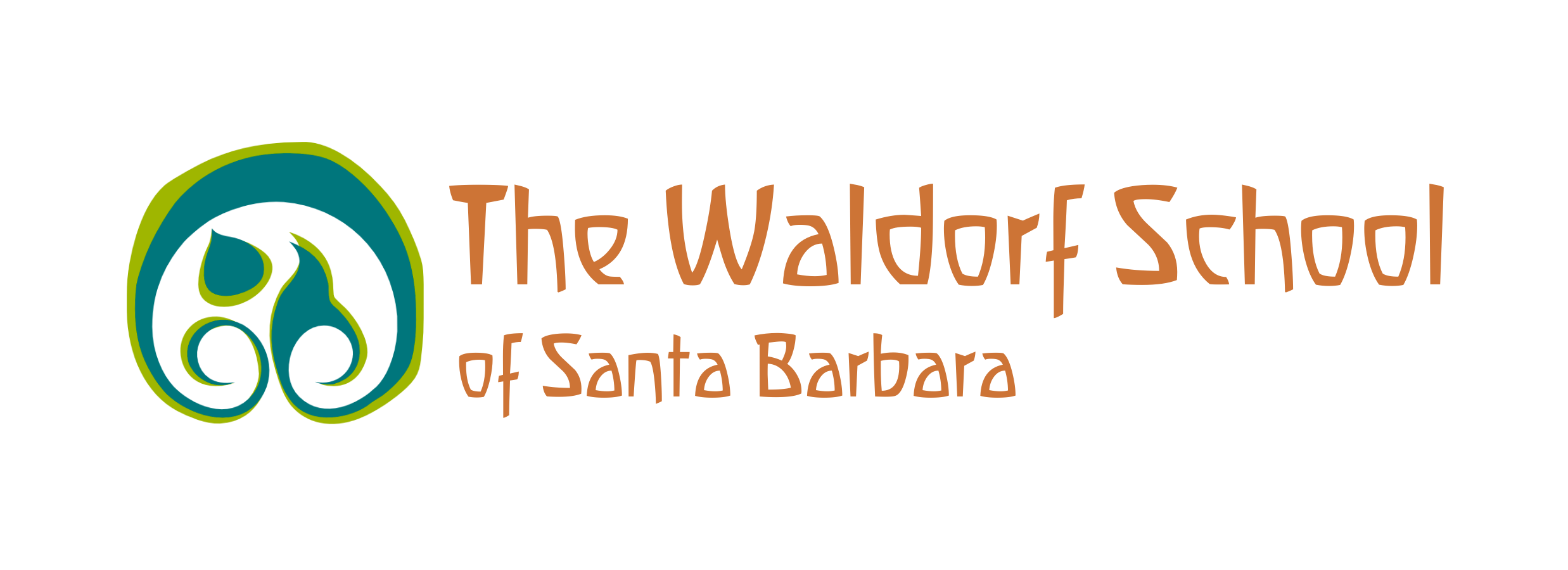Michalemas Time and Cursive Handwriting
Thank you to everyone who was able to make it to the Back to School Night. It was an enjoyable and informative evening! For those of you who couldn’t make it, a summary will be sent out soon.
Our Michaelmas Festival is next Friday, September 27, from 9:00 a.m. to noon at Tucker’s Grove Park. This traditional Waldorf festival, which falls near the equinox, is commonly associated with the beginning of autumn and harvest time. The festival symbolizes the courage that we need to prepare for the colder, darker winter months, and the impulse to turn inward to gather up strength and fortitude to face the changing seasons. We hope to see many of you there!
In today’s newsletter, our Pedagogical Chair, Ms. Caverly, shares the benefits of cursive writing.
Cursive Writing at WSSB
In the Waldorf First Grade the students are introduced through the beautiful story content of the Fairy Tales and Nature Stories to the very first formal writing of their letters in upper and lower case print. The weekly Form Drawing class spans across the school year in support of writing well-formed letters. In the Second Grade the Class Teacher introduces cursive writing, and the instruction and refining of this cursive form is developed throughout the year, and on into Third Grade when deemed necessary. Thus, because Waldorf students make their own main lesson books throughout the grades, they have almost daily practice of this brain stimulating activity. This not only presents the next important skill-building for their written work, but it gives them the chance to work with greater efficiency, speed, and dexterity, while strengthening the activity of thinking.
There are a number of other benefits as well. Neurologically, writing in cursive script, as opposed to printing or keyboarding, strengthens visual and tactile coordination (eye to hand) and builds sustained muscle memory. It helps young readers see the form of whole, complete words and the natural pauses we make when thinking and speaking, due to the natural spacing that takes place as we lift our pencil at the end of one word before beginning the next. With all the looping and crossing over in cursive script, pathways between the left and right sides of the brain are opened up and reinforced. This enhances the development of thinking clearly, sequentially, and imaginatively. Since writing in cursive is naturally a quicker and more fluid activity, students are able to get more of their thoughts and ideas onto paper. Last but not least, the addition of such aesthetic beauty in lettering to their main lesson books only enhances their growing expertise as visual artists.
From the National Institute of Health’s Nat’l Library of Medicine comes this:
“Cursive writing is a complex and central cultural skill (Kersey and James, 2013; Kiefer et al., 2015), involving many brain systems and the integration of both motor and perceptual skills (Vinci-Booher et al., 2016; Thibon et al., 2018). The skill of cursive writing is often used as a tool for learning (Arnold et al., 2017), considering the depths of processing that note-taking by hand provides, even in the absence of a review of the notes (Kiewra, 1985). Thus, cursive writing has been considered an essential precursor for further academic success (Fears and Lockman, 2018), and the skill is typically acquired during childhood in societies with a strong literacy tradition (Kiefer et al., 2015). Children must learn how to coordinate their hand movements accurately and produce the shape of each letter, and they may take several years to master this precise skill (Van der Meer and Van der Weel, 2017).”
The most beautiful aspect of learning to write in cursive is the excitement the children feel as they approach this modest rite of passage as second graders. Before writing their first letters and words in cursive, they have practiced “running forms” in their Form Drawing class for a month or so, usually beginning after the winter holiday. And by spring, all of their lesson and book writing will now ideally be in cursive, and will continue on throughout their grade school years. The teachers at WSSB are happy to facilitate and gently guide our students as they take on this worthy challenge and important step forward. Oh, and by the way, its never too late to learn cursive writing!
Important Dates:
Monday, September 23 at 8:30 a.m.: Fundraising Events Meeting
Tuesday, September 24 at 8:30 a.m.: POEM Committee Meeting
Wednesday, September 25 at 3:30 p.m.: Board of Trustees Meeting
Thursday, September 26 at 1:00 p.m.: Halloween Journey Meeting
Thursday, September 26 at 5:00 p.m.: Parent Association Meeting
Friday, September 27 from 9 a.m. to noon: Michaelmas Festival
Sunday, September 29 to Friday, October 4: Grade 8 Trip to Headwaters Outdoor School in Shasta
In gratitude,
The WSSB Admin Team


